Accepted Scientific Name: Eriosyce crispa (F.Ritter) Katt.
Eriosyce (Cactac.) gen. revis. & ampl. (Succ. Pl. Res., 1) 118 (1994)
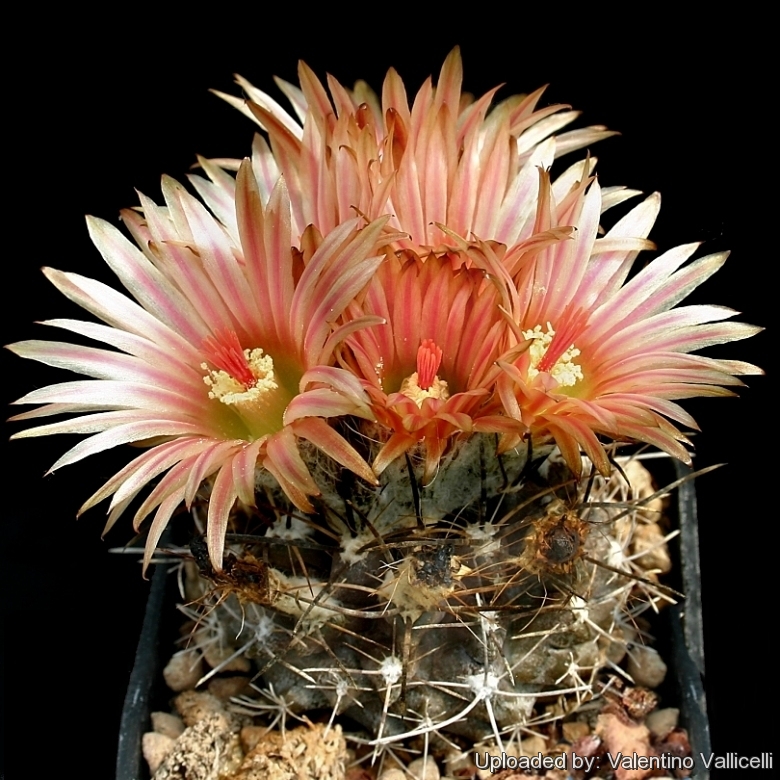
Neoporteria crispa (Eriosyce crispa) Photo by: Valentino Vallicelli
FK65-77 Canta de Agua. It has showy blooms and long thin black spines.
Origin and Habitat: From Huasco to north of Totoral Bajo, Atacama, Chile.
Habitat: Coastal areas of South America, where it grows in areas where very little else grows. It's a very drought tolerant species. Despite the lack of rain where it lives, the extreme aridity is attenuated by the frequent, often dense, coastal fogs. The fog tends to concentrate in the form of a cloud band at an estimated height of 500 to 850 m. It shows a recurrent pattern; usually it is overcast in the early mornings, the clouds dissipating during the late morning and returning during the late afternoons. The plant grows often buried in the ground and is almost impossible to spot without the flowers. Due to occasional precipitation, this vegetation has more permanence and continuity than the vegetation occurring farther north. The endemics include Copiapoa echinoidesSN|1318]]SN|1109]], Copiapoa malletianaSN|1109]]SN|1318]], Eriosyce napinaSN|2370]]SN|2370]] and Neoporteria villosa var. lanicepsSN|12572]]SN|12572]]. At times this region is dominated by geophytes, which can cover expanses of the desert spectacularly.
Synonyms:
See all synonyms of Eriosyce crispa
back
Accepted name in llifle Database:Eriosyce crispa (F.Ritter) Katt.Eriosyce (Cactac.) gen. revis. & ampl. (Succ. Pl. Res., 1) 118 (1994)Synonymy: 6
Accepted name in llifle Database:Eriosyce crispa var. atroviridis (F.Ritter) Katt.Eriosyce (Cactac.) gen. revis. & ampl. (Succ. Pl. Res., 1) 118 (1994)Synonymy: 11
Accepted name in llifle Database:Eriosyce crispa var. carrizalensis (F.Ritter) Katt.Eriosyce (Cactac.) gen. revis. & ampl. (Succ. Pl. Res., 1) 118 (1994)Synonymy: 8
Accepted name in llifle Database:Eriosyce crispa var. huascensis (F.Ritter) Katt.Eriosyce (Cactac.) gen. revis. & ampl. (Succ. Pl. Res., 1) 118 (1994)Synonymy: 6
Accepted name in llifle Database:Eriosyce crispa var. totoralensis (F.Ritter) Katt.Eriosyce (Cactac.) gen. revis. & ampl. (Succ. Pl. Res., 1) 118 (1994):Synonymy: 7
back
Description: Eriosyce crispaSN|2429]]SN|2429]] is A Flattened to slightly cylindrical cactus, slowly growing up to 10 cm in diameter.
Stem: Blackish, brownish or dark olive green, often with a greyish-white waxy coating presumably to prevent dessication in it's extremely dry environment. In cultivation the white waxy bloom is often not produced, revealing the brownish/blakish epidermis.
Roots: Fibrous, arising from short taproots. Root system often separated by a narrower neck.
Ribs: Noticeably tubercled with pronounced chinlike protrusions.
Areoles: Often somewhat sunken and woolly.
Spines: Black or brown more or less curved upward & twisted that are not easily distinguished as centrals or radials.
Central spines: 1-5, more or less thick 15-80 mm long.
Radial spines: 6-14, thinner, sometime bristly 10-50 mm long.
Flowers: Diurnal, 3,5-5 cm long and broad, closely packed apically from young areoles, funnel-form, the colour is whitish, pinkish or reddish with red/brownish midveins. Pericarpel and floral tube with bracts, wool and bristles, but flower base not bristly.
Fruits: More or less elongated, pinkis-red deishing by basal pores.
Subspecies, varieties, forms and cultivars of plants belonging to the Eriosyce crispa group
 Eriosyce crispa (F.Ritter) Katt.: Flattened to slightly cylindrical cactus, slowly growing up to 10 cm in diameter with showy pink blooms and long hairlike, contorted, thin black spines not easily distinguishable as centrals and radials.It is found only west of Freirina.
Eriosyce crispa (F.Ritter) Katt.: Flattened to slightly cylindrical cactus, slowly growing up to 10 cm in diameter with showy pink blooms and long hairlike, contorted, thin black spines not easily distinguishable as centrals and radials.It is found only west of Freirina. Eriosyce crispa var. atroviridis (F.Ritter) Katt.: It has thick, needle-like spines and 12-14 radials. Distribution: it is fpund around Vallenar and Freirina.
Eriosyce crispa var. atroviridis (F.Ritter) Katt.: It has thick, needle-like spines and 12-14 radials. Distribution: it is fpund around Vallenar and Freirina. Eriosyce crispa var. carrizalensis (F.Ritter) Katt.: It has stiff, needle-like spines, 10-13 radials, and about 15 ribs. Distribution: It is found around Carrizal and Carrizal Bajo.
Eriosyce crispa var. carrizalensis (F.Ritter) Katt.: It has stiff, needle-like spines, 10-13 radials, and about 15 ribs. Distribution: It is found around Carrizal and Carrizal Bajo. Eriosyce crispa var. huascensis (F.Ritter) Katt.: It has stiff, needle-like spines, only 6-8 radials, and 10-12 ribs. Distribution: East of Huasco.
Eriosyce crispa var. huascensis (F.Ritter) Katt.: It has stiff, needle-like spines, only 6-8 radials, and 10-12 ribs. Distribution: East of Huasco.- Eriosyce crispa var. totoralensis (F.Ritter) Katt.: It has twisted spines and few ribs. Distribution: it is found near Copiapo and Totoral Bajo.
Bibliography: Major references and further lectures
1) Edward Anderson “The Cactus family” Timber Press, Incorporated, 2001
3) James Cullen, Sabina G. Knees, H. Suzanne Cubey "The European Garden Flora Flowering Plants: A Manual for the Identification of Plants Cultivated in Europe, Both Out-of-Doors and Under Glass" Cambridge University Press, 11/Aug/2011
4) David R Hunt; Nigel P Taylor; Graham Charles; International Cactaceae Systematics Group. "The New Cactus Lexicon" dh books, 2006
5) Fred Kattermann “Eriosyce (Cactaceae): The Genus Revised and Amplified” David Hunt, 1994
6) Stephen D. Davis “Centres of Plant Diversity: The Americas” World Wide Fund for Nature (WWF) and ICUN - World Conservation Union, 01 January 1994
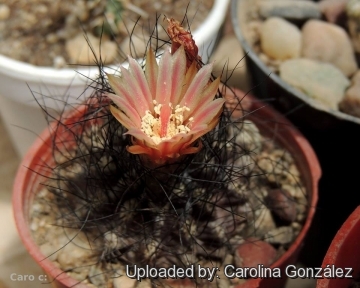 Neoporteria crispa (Eriosyce crispa) Photo by: Carolina González
Neoporteria crispa (Eriosyce crispa) Photo by: Carolina González Habit at Quebrada Carrizal Bajo (28°08'S) in the coastal area between Totoral and Huasco (Chile). (Eriosyce crispa) Photo by: Carolina González
Habit at Quebrada Carrizal Bajo (28°08'S) in the coastal area between Totoral and Huasco (Chile). (Eriosyce crispa) Photo by: Carolina González Neoporteria crispa (Eriosyce crispa) Photo by: Valentino Vallicelli
Neoporteria crispa (Eriosyce crispa) Photo by: Valentino Vallicelli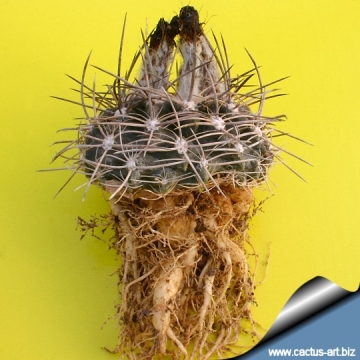 Neoporteria crispa (Eriosyce crispa) Photo by: Cactus Art
Neoporteria crispa (Eriosyce crispa) Photo by: Cactus Art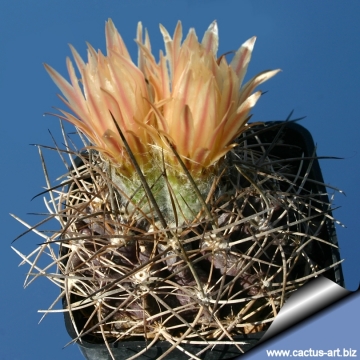 Neoporteria crispa (Eriosyce crispa) Photo by: Cactus Art
Neoporteria crispa (Eriosyce crispa) Photo by: Cactus Art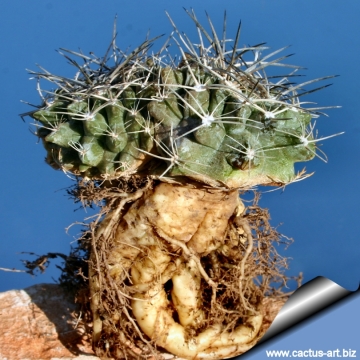 Neoporteria crispa (Eriosyce crispa) Photo by: Cactus Art
Neoporteria crispa (Eriosyce crispa) Photo by: Cactus Art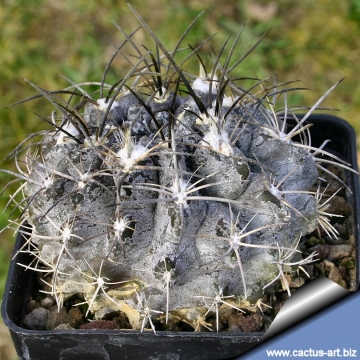 This plant often produces a greyish-white waxy coating (Like the copiapoas) (Eriosyce crispa) Photo by: Cactus Art
This plant often produces a greyish-white waxy coating (Like the copiapoas) (Eriosyce crispa) Photo by: Cactus Art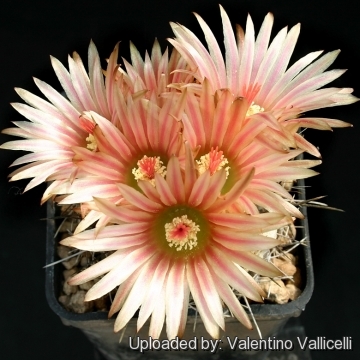 Neoporteria crispa (Eriosyce crispa) Photo by: Valentino Vallicelli
Neoporteria crispa (Eriosyce crispa) Photo by: Valentino VallicelliCultivation and Propagation: Eriosyce crispaSN|2429]]SN|2429]] is a slow growing but relatively easy to grow species, providing they are kept dry during autumn and winter and rot prone if kept in a non ventilated place.
Soils: Require a very fast mineral draining drying soil (70-80% grit and 20-30% of land soil). To prevent rottenness it is also advisable to surround its root neck by very rough sand or grit, this help a fast water drainage and an appropriate air circulation.
Watering Needs: Root prone it needs good drainage, waterings should regular in summer (do not overwater), to keep the plant compact and not become excessively elongated and unnatural in appearance. During the winter quiescent period, or when night temperatures remain below 10° C, it must be strictly kept dry since it is very sensitive to any moisture excesses.
Fertilization: During the beautiful season it’s good to enrich the soil using a fertilizer rich in potassium and phosphorous, but poor in nitrogen, because this chemical element doesn’t help the development of succulent plants, making them too soft and full of water.
Exposure: Requires strong sun exposure to develop good spinal growth (maximum brightness, sunlight accepted), but tolerate light shade. Some light shadow my be useful in the hottest summer days.
Frost Tolerance: Hardy to at least -5°C for a short period but cannot tolerate long standing freezing temperature, and for an healthy cultivation ensure a minimum temperature of 5° C. Assure a good ventilation. USDA Hardiness Zone 9b and 11.
Heat tolerance: Good heat tolerance, but in warmer climates it should be protected from excessive heat and too much sun sun in summer.
Maintenance: Repot in the spring, when its roots become cramped. Generally, it should be repotted every other year in order to provide fresh soil. After repotting, do not water for a week or more.
Propagation: Usually propagated from Seeds. (seldom produces offsets). Sow the seeds in spring in a well-aerated compost at a temperatures of 22-24°C . Stand the pots in water, moisten thoroughly and drain. Scatter and press lightly the seed onto the top of the compost. But do not cover the small seeds with compost. Secure a polythene bag around the pot or cover the container with glass or and place in a warm shaded place. If possible, germinate in a propagator. Some seedlings may appear within a week or 10 days others will take longer. At lower temperatures, germination usually takes considerably longer. Once germination has taken place, remove gradually the glass or plastic and move into a good light but not in direct sun. If the young plants are exposed to too much sun, or the compost dries out, they may stop growing and often turn red; once they stop, it is often difficult to persuade them to start growing again. Never let the pots dry out-but don't saturate them either. A sodden compost is as harmful as a dry one. The seedling growth is rapid. But the seedling are often grafted because the plants on their own roots (especially the bigger ones) are extremely prone to root rot. In fact the best and older specimens are the grafted ones.
Your Photos
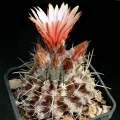
by Valentino Vallicelli



















